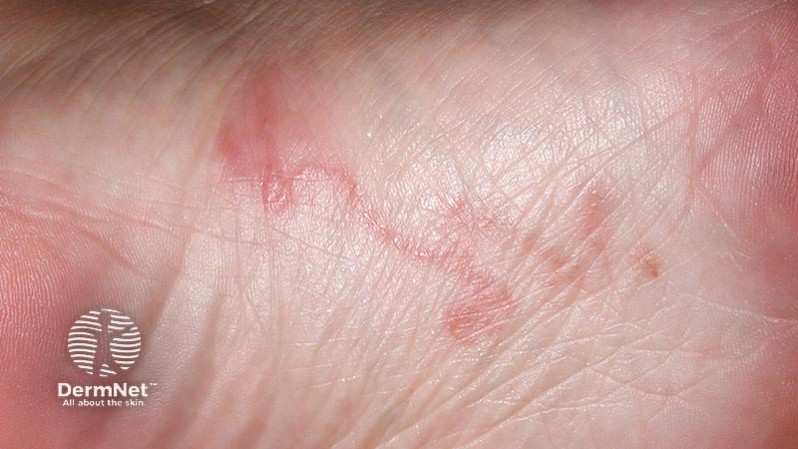Main menu
Common skin conditions

NEWS
Join DermNet PRO
Read more
Quick links
Author(s): Dr Ian Coulson, Dermatologist, United Kingdom.
Edited by the DermNet content team.

This 30-year-old lady has recently returned from a holiday in Thailand. She has developed red itchy lesions on her feet.
There is a curved, almost snake-like red track on the sole.
With her recent travel to the tropics, this suggests larva migrans.
It is caused by the larvae of the dog hookworm, Ankylostoma brasiliensis. The usual method of acquisition results from walking barefoot on a beach. Infested dogs defecate on the sand, and the larvae of the hookworm burrow into the wet sand. The dog stools are often then washed away by the tide. The larvae are attracted to human skin in contact with the sand and they can burrow under the scheme producing the typical serpentine skin lesions.
The soles and buttocks are the most common sites affected.
The condition is self-limiting as after a number of weeks the larvae die. However, as soon as the human victim is aware of the diagnosis, they want the larvae stopped in their tracks! This can be affected by anthelmintics (eg, ivermectin, albendazole).